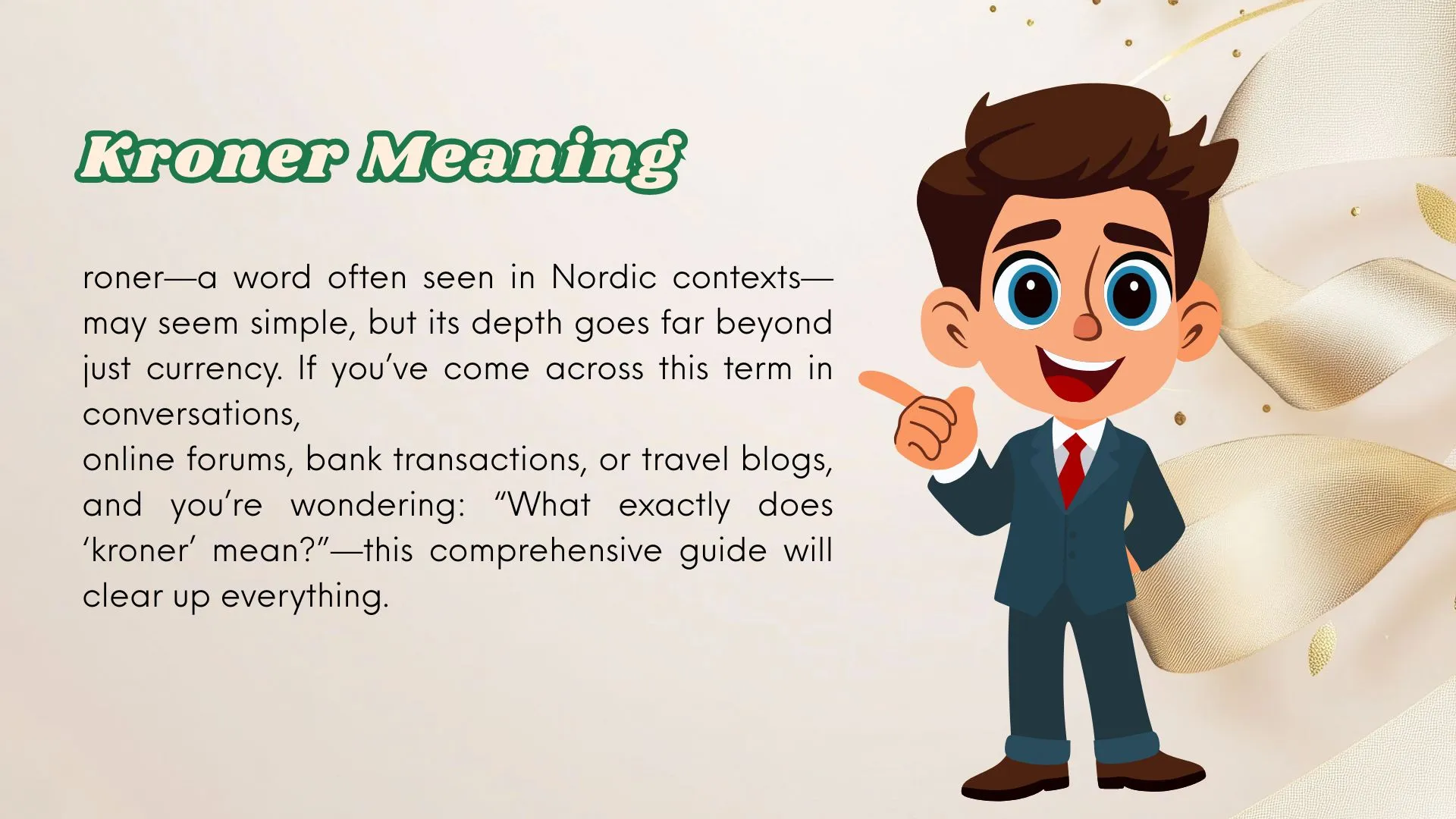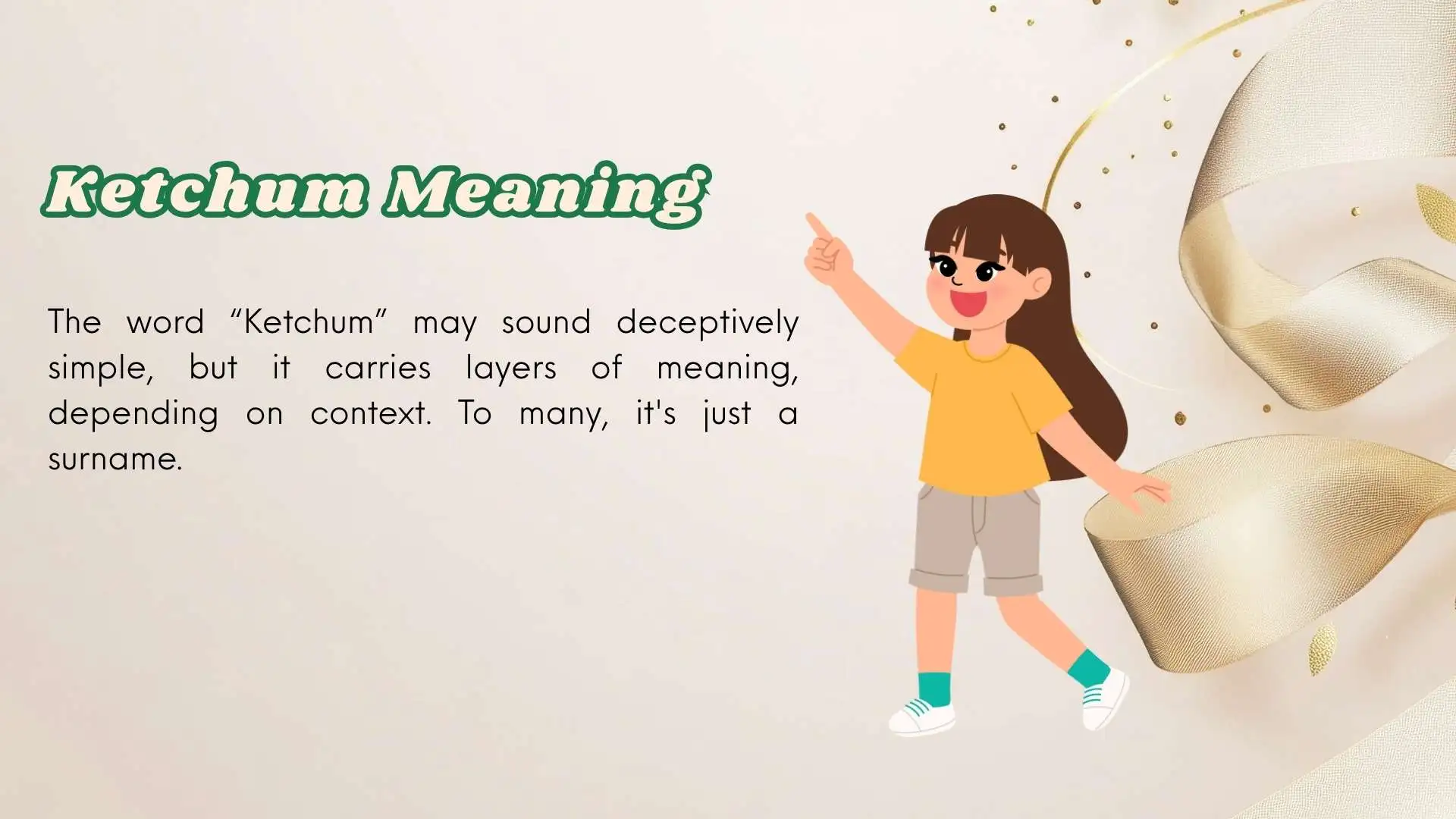Kroner—a word often seen in Nordic contexts—may seem simple, but its depth goes far beyond just currency. If you’ve come across this term in conversations,
online forums, bank transactions, or travel blogs, and you’re wondering: “What exactly does ‘kroner’ mean?”—this comprehensive guide will clear up everything.
In this 2025 advanced guide, we’ll explore the definition, origin, plural/singular usage, context in modern conversation, and more. We’ll also give you alternative expressions for various tones—whether you’re being formal, casual, or technical.
Let’s dive in and give you a crystal-clear understanding of the word “kroner.”
🧠 What Does “Kroner” Mean?
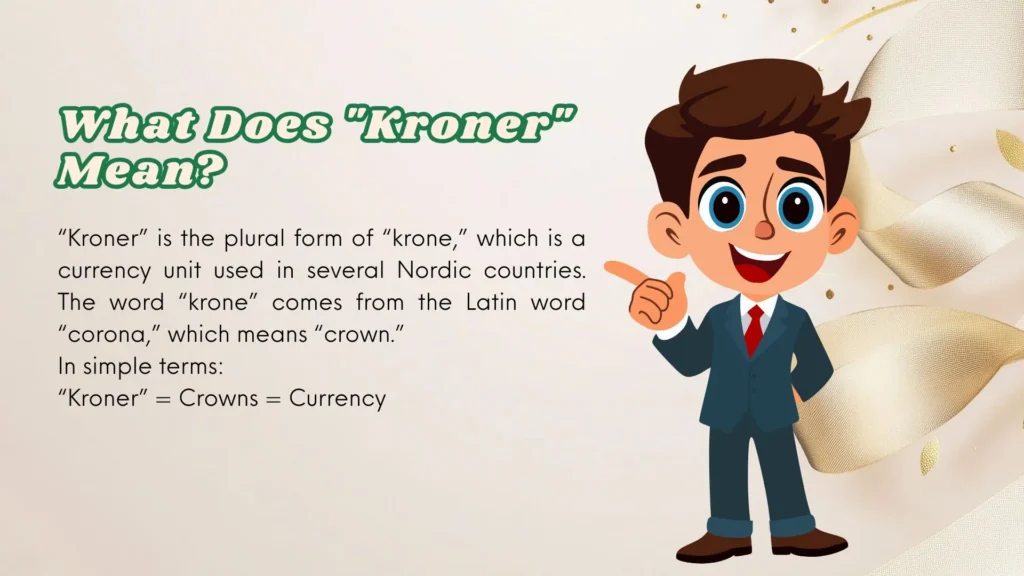
“Kroner” is the plural form of “krone,” which is a currency unit used in several Nordic countries. The word “krone” comes from the Latin word “corona,” which means “crown.”
In simple terms:
“Kroner” = Crowns = Currency
🏦 Countries That Use the Krone (2025 Updated)
| Country | Currency Name | ISO Code | Plural Form |
|---|---|---|---|
| Denmark | Danish Krone | DKK | Kroner |
| Norway | Norwegian Krone | NOK | Kroner |
| Iceland | Icelandic Króna | ISK | Krónur (Icelandic plural) |
⚠️ Note: Sweden uses Swedish Krona (SEK) but its plural is kronor, not kroner. While related linguistically, it’s technically different.
🧬 Etymology of “Krone” and “Kroner”

- Krone (singular) = “Crown” in Danish and Norwegian
- Kroner (plural) = “Crowns” or “units of currency”
- Derived from Latin corona, then absorbed into Old Norse and other Germanic languages.
This naming reflects the royal authority historically symbolized by coins bearing a monarch’s crown or face.
✍️ “Kroner” Meaning in Text
In written communication, “kroner” is often used to refer to amounts of money, especially in:
- Financial reports
- Travel guides
- Currency exchange apps
- Business transactions
- Online discussions about cost/value in Denmark or Norway
Example:
“The total cost of the tour was 950 kroner, including meals and accommodation.”
Correct Usage Tip:
Never say “950 krone” — it’s incorrect. “Krone” is singular. When the amount is more than one, use “kroner.”
💡 Common Contexts Where “Kroner” Appears
| Context | Example Sentence |
|---|---|
| Currency exchange | “You’ll get 1,300 kroner for 150 USD.” |
| Travel budget | “Plan to spend around 1,000 kroner per day.” |
| Bank transfer | “The invoice shows 2,500 kroner for services.” |
| Shopping | “This bag costs 500 kroner in Copenhagen.” |
| News headlines | “Government allocates 3 million kroner to health sector.” |
🧭 How to Say “Kroner” in Different Tones and Styles

Sometimes, you don’t want to sound too direct—or maybe you’re writing an email, creating a blog, or speaking to different audiences. Below are 10 nuanced alternatives to the word “kroner” based on tone and situation.
💼 1. Formal Alternative: “Danish/Norwegian Currency Units”
“The final payment amounted to 2,000 Danish currency units.”
Use this when writing legal, business, or academic documents where clarity matters more than casual tone.
🧾 2. Technical Usage: “DKK” or “NOK”
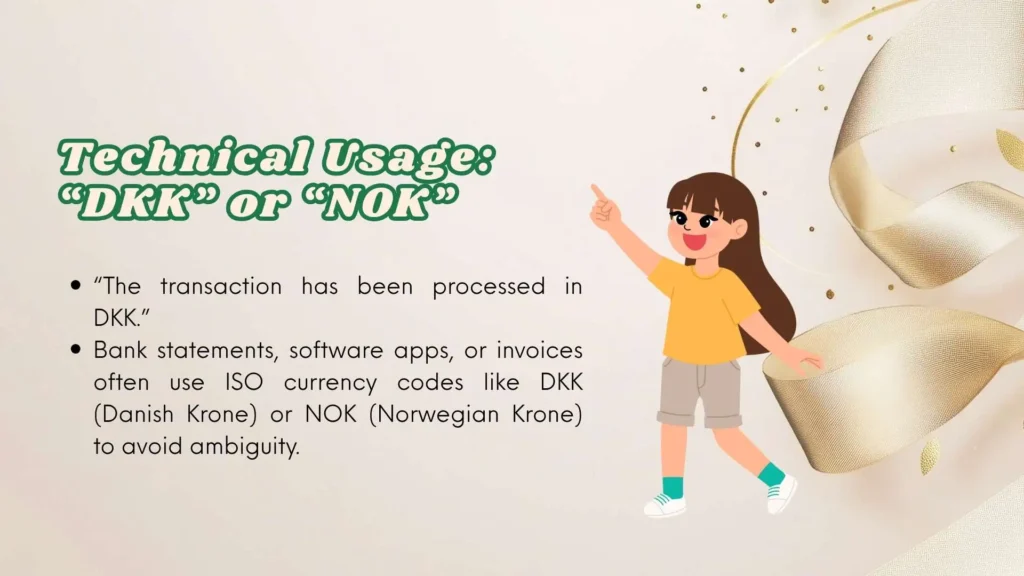
“The transaction has been processed in DKK.”
Bank statements, software apps, or invoices often use ISO currency codes like DKK (Danish Krone) or NOK (Norwegian Krone) to avoid ambiguity.
😎 3. Casual Speech: “Crowns”
“That burger cost me 80 crowns, can you believe it?”
Some English speakers casually translate “kroner” as crowns, especially while storytelling or in casual chat.
🗣️ 4. Conversational: “Kr”

“Dinner was only kr150—cheap and delicious!”
This shorthand is widely accepted in texts, receipts, or online listings.
💸 5. Professional Tone: “Payment in Local Currency”
“All invoices must be paid in local currency (kroner).”
Neutral and respectful, this avoids naming the currency while remaining clear.
🧳 6. Travel Style: “Scandinavian Currency”
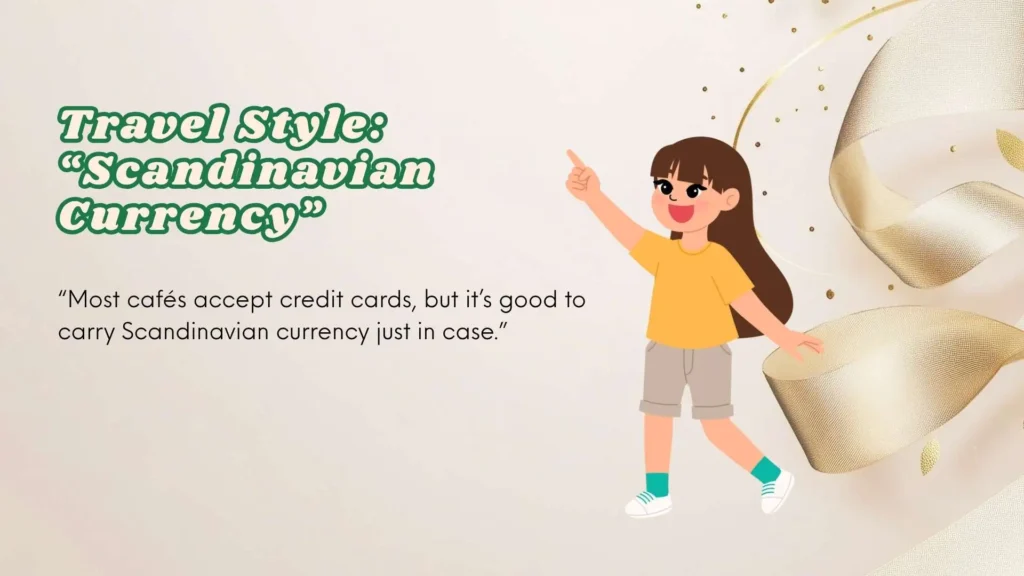
“Most cafés accept credit cards, but it’s good to carry Scandinavian currency just in case.”
Use this in blogs or guides where readers may visit multiple countries.
🧮 7. Comparative: “Equivalent to X USD”
“The item costs 250 kroner (~$36 USD).”
Always helpful for international readers who may not know kroner’s value.
💰 8. Descriptive: “Danish/Norwegian Cash”
“He paid the driver in Norwegian cash, not a card.”
This adds a sensory or descriptive layer, ideal for creative or narrative writing.
🛒 9. Informative: “Kroner (Local Money)”
“Expect to pay around 1,200 kroner (local money) for a good hotel.”
Helpful in guides or resources for non-European readers.
🧾 10. Polite Clarity: “Kroner (Norwegian Currency)”
“Please bring 500 kroner (Norwegian currency) for your excursion.”
This tone blends formality with clarity—perfect for emails, events, or instructions.
🧠 Bonus: When to Capitalize “Kroner”
- ✅ Correct: “He exchanged US dollars for Danish Kroner.”
- ❌ Incorrect: “He exchanged us dollars for danish kroner.”
Tip: Always capitalize the country name (e.g., Danish, Norwegian), but “kroner” itself does not need capitalization unless it starts a sentence or is part of a proper noun.
🤯 Common Mistakes with “Kroner”
| Mistake | Correct Version |
|---|---|
| “1 kroner” | “1 krone” |
| “100 kronas” | “100 kroner” |
| “Kroners” | “Kroner” (no ‘s’) |
| “The kroners are valuable” | “The kroner are valuable” |
| “Icelandic kroner” | “Icelandic krónur” |
✈️ Currency Conversion Example (2025)
As of August 2025, here’s how 1 USD converts:
- 🇩🇰 Danish Krone (DKK) ≈ 6.82
- 🇳🇴 Norwegian Krone (NOK) ≈ 10.24
- 🇮🇸 Icelandic Króna (ISK) ≈ 137.5
These rates fluctuate—use a reliable currency converter app like XE or Wise.
🎯 Final Thoughts | Why “Kroner” Still Matters
Whether you’re:
- Traveling to Denmark or Norway
- Working with international clients
- Studying economics
- Or just curious about global currencies
…understanding what “kroner” means, how to use it, and how to explain it will help you sound confident and clear.
With this in-depth guide, you now know not just what “kroner” means—but how to speak it, write it, and tailor it for every audience.

Dulcie Mae is a passionate storyteller, known for her ability to weave deep emotions into captivating narratives. With a unique voice that resonates with readers around the world, she explores themes of love, loss, and personal growth through her writing.
She is the acclaimed author of “Whispers Between the Pages”, a heartfelt novel about rediscovering oneself after heartbreak, and “Beneath the Lavender Sky”, a poetic journey through healing and hope. Her latest release, “The Silence of Wildflowers”, has touched the hearts of many with its lyrical prose and unforgettable characters.

